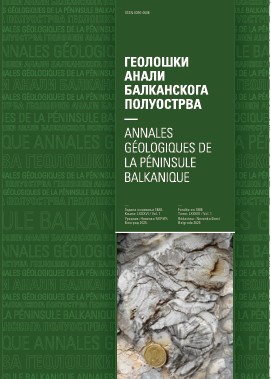Reconsidering paleozoic differences between the Jadar block and the Drina-Ivanjica unit
Abstract
The peculiar Jadar block has an intervening position separating the main Neotethyan West Vardar Zone (including ophiolites of Late Jurassic age) and a passive margin lithospheric segment of the Apulia/Adria microplate referred to as the Drina-Ivanjica block. The review aimed to reassess the peri- Neotethyan paleogeography affecting the evolution of the Neotethyan oceanic crust (‘single’ vs. ‘multiple oceans’ or single vs. two ophiolite belts) by juxta - posing the key differences of the late Variscan temporal evolution (controlling early Alpine paleogeography) between the Jadar block and Drina–Ivanjica crystalline segment. The study goal is the questionable paleogeographic affinity of the Jadar block. Contrary to the recent inferences attributing the Jadar block as a segment of the Apulia/Adria microplate, the study examine whether and how the Jadar Late Paleozoic succession may allow for an alternative paleogeographic solution of the Neotethyan relevance. According to this comparison survey of these late Paleozoic successions, it appears that the Jadar block may carry a (tentative) evidence of the proximity of the western Paleotethys. The comparison yields a putative paleogeographic position associating the Jadar block with the post-Variscan European margin (not Аpulia/Adria microplate). The proposed shift of the Permian-Triassic paleogeographic position of the Jadar block inevitably affects the obduction length i.e. questions a favourable protracted along strike-width of the overriding Neotethyan West Vardar ophiolites (‘single ocean model’).
Copyright (c) 2020 Geološki anali Balkanskoga poluostrva

This work is licensed under a Creative Commons Attribution 4.0 International License.










